http://www.pcworld.com/article/248639-4/software_that_does_it_all.html
Edit your photos, organize your finances, access your computer remotely, and do even more with these essential software packages and Web apps--a mix of established favorites and indispensable up-and-comers.
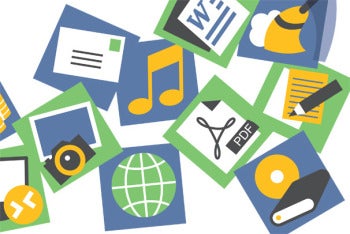 Illustration by Anders WenngrenA computer is only as useful as the software you run on it, so you should keep your PC's software current--and not necessarily with the latest version of a program that's getting long in the tooth. Sometimes, switching to a new application can help you speed up your work or make your system more efficient.
Illustration by Anders WenngrenA computer is only as useful as the software you run on it, so you should keep your PC's software current--and not necessarily with the latest version of a program that's getting long in the tooth. Sometimes, switching to a new application can help you speed up your work or make your system more efficient.PCWorld examined software tools for handling 11 categories of common (and essential) PC tasks: presentations, financial planning, note taking, file management, photo editing, email, word processing, music organizing, remote access, cleanup/optimization, and backup. In each instance, we identified the dominant program, a promising challenger, and (where applicable) an online alternative. Our category coverage invites you to consider the pros and cons of each type of contender: incumbents, up-and-comers, and Web apps.
Presentations
• Incumbent: Microsoft PowerPoint. The 600-pound gorilla in the world of presentations is Microsoft's PowerPoint (available as a component of various Microsoft Office bundles or separately for $140). The application is so dominant that the phrase “send me the PowerPoint” has become ubiquitous in business circles.
• Up-and-comer: Prezi. Easily the most interesting alternative to PowerPoint, Prezi has both local and online components. The free, public (and Web-only) version lets you create arguably better presentations than PowerPoint can deliver. Instead of being slide-based, Prezi uses a single-pane approach. The process may seem strange at first, but Prezi's tutorials and inline help will get you up to speed in a hurry. Prezi is collaborative, so multiple users can work on the same presentation simultaneously via Prezi Meeting. When it's time to give the presentation, you can play the show online (it's Flash-based) or download a .zip file, extract it, and play it locally using the included prezi.exe file. Signing up for the pro version of Prezi ($59 a year) entitles you to download Prezi Desktop, and you work on presentations locally.
• Web app: TransMedia Glide Presenter. Part of the browser-basedGlide desktop operating system (free with 30GB of storage, or $50 a year with 250GB), Glide Presenter works in a slide-by-slide format. It's easy to use, and you can export creations as PowerPoint files or PDF files. You can stream audio and video in presentations, and create presentations collaboratively.
Financial Planning
• Incumbents: Intuit Quicken and Intuit Mint. Though Quicken (starts at $30) is desktop software and Mint is a free Web-based service, both offerings are go-to resources for budgeting, and both come from the same company: Intuit.
• Up-and-comer: You Need A Budget. Part budgeting tutorial and part money management guide, this intuitive program walks you through setup and fund allocation, helping you add accounts and project spending in dozens of categories. YNAB then maintains a running tab of your spending, with graphs that illustrate how much you've spent over the months and how your net worth has progressed. Security-conscious users will appreciate that YNAB can't automatically download activity from your bank account. You can import OFX, QFX, and QIF files into the ledger, but YNAB encourages self-reporting because that approach forces you to think more concretely about your spending habits. You can try out You Need A Budget for free, but it costs $60 to keep. The price of admission also buys you entry into YNAB forums and financial-planning classes, where you can glean advice from experts.
• Web app: HelloWallet. If you need to balance your books but you have trouble finding time to record everything you earn and spend, try HelloWallet. This app syncs with online accounts and lets you flag spending as 'wish I hadn't', 'glad I did', 'had to', and so forth, so that you can identify expenditures to eliminate in the future. For a monthly $9, the site walks you through budget setup and notes how much, on average, other people in your city with your income spend in each expense category. Correction: this article originally stated that HelloWallet is a free app. It in fact costs $9 per month for individual users.
Note Taking
• Incumbent: Evernote. A multipurpose tool for note taking, note syncing, offline bookmark creation, and information organizing, Evernote (free) keeps coming up with ways to make the data you need easier to keep track of. Its latest iOS apps, EvernoteHello and EvernoteFood, are designed to keep records on all of the people you meet and all of the food you eat.
• Up-and-comer: Microsoft OneNote. Microsoft's note-taking program comes bundled with the most basic version of Microsoft Office (it costs $80 when purchased by itself), and it's easily the most overlooked program in the 2010 Office Suite. That's too bad, because this little notepad makes capturing your thoughts incredibly easy. PressWindows-S to capture any portion of your computer screen and automatically drop the image into your notebook. It's a great way to generate Web clippings if you're shopping around for something. Also, you can click anywhere in the notebook and start typing, so your notes have more visual appeal than a simple list might have.
• Web app: Springpad. Some people believe that note taking works better online, because syncing is faster, notes don't take up local storage space, and sharing is easier. To exploit these advantages, Springpad's free Web service and mobile apps let you add not just notes but also links, photos, videos, and files to your box of “stuff”--in much the same way as Dropbox, but with a clear notebook and to-do list function. You can also check out files that your Springpad-using friends unlock, making it an easy way to share videos and create collaborative lists.
File Management
• Incumbent: Microsoft Windows Explorer. The file management utility that comes preloaded on all Windows PCs does an adequate job, and most people tend to overlook it. Generally it loads quickly if you're searching for local files (network searches are a different story, though); and in Windows 7, right-clicking any file allows you to perform a multitude of actions, depending on what other programs you've downloaded to your computer. Overall, Windows Explorer is easy to use and intuitive--but it isn't always for everyone.
• Up-and-comer: CodePlex Better Explorer. Maintained by CodePlex, an open-source software development community, Better Explorer (aka BExplorer) looks and behaves the way Windows Explorer will in Windows 8--except that it runs in Windows 7. At the top of the file-finder window, Better Explorer adds options that behave much as the Ribbon at the top of Microsoft Word's newest layout does, letting you more easily arrange, copy, move, and delete files. The free tool also has a button for accessing a file's properties when you're using a device (such as a tablet) that doesn't support right-clicking. Best of all, you can view folders in tabs at the top of the window, so you can see multiple folders at once without getting lost. (For more, see "How to Get Windows 8 Features Now.")
Photo Editing
• Incumbent: Adobe Photoshop. The de facto standard for photo editing, Photoshop (starts at $700) remains in a class by itself, with a vast array of tools and plug-ins, plus an unparalleled ability to automate repetitive tasks. The free, almost-as-powerful alternative (if you can live with a slightly clunky interface) is GIMP--the GNU Image Manipulation Program.
• Up-and-comer: CyberLink PhotoDirector. CyberLink may be best known for its video-editing and disc-burning software, but it has put a lot of its tech prowess into an independent photo-editing program called PhotoDirector. The program is a combination librarian, editor, and slideshow creator, with good import capabilities. PhotoDirector's powerful editing and tweaking controls are easy to use, and they're readily available on a scrolling pane to the left of the main window. Compared to programs where you must endlessly open dialog boxes, windows, or panes to apply settings, it's a joy to use. PhotoDirector provides numerous presets for users who want to get creative, and the company's online DirectorZone lets you share those presets and explore presets made by others. You can post photos on Flickr and slideshows on YouTube from within the program. At $65, PhotoDirector is a bit pricier than some of the low-end competition, but the time that you'll save by working with its interface makes it well worth the price.
• Web app: Pixlr Editor. The free Pixlr is like a superclean online version of Photoshop; and considering that it operates within a browser window, the software is amazingly robust. Pixlr's various tools have a distinctly artistic bent. For instance, the pencil tool simulates using the tip or edge of a pencil, depending on how you move the cursor. The software also comes with excellent filters galore. Your first impression is likely to be, “Is this really free?”
• Incumbent: Microsoft Outlook. Seamless support for Microsoft Exchange and integrated calendaring functions explain the dominance of Outlook (available in assorted Microsoft Office bundles, or separately for $140) in the business email market. Mozilla Thunderbird is a venerable free downloadable alternative that handles multiple accounts, though it doesn't offer Exchange support. find.pcworld.com/72613 (Thunderbird)
• Up-and-comer: eM Client. Though it supports only IMAP and POP accounts, eM client is in other respects a virtual clone of Outlook. Besides being able to handle multiple accounts with ease (in some ways it manages this task better than Outlook does), eM offers junk-mail control, task management, calendaring functions, and contact management. It even imports data from Outlook and syncs seamlessly with Gmail. In addition, eM Client works with various flavors of instant messaging, including Facebook and Skype. In lieu of Exchange, eM Client relies on its own Sync2eM service, which works just like Exchange. At $50 a year, it costs much less than hosted Exchange does, with clients for Android, iOS, and Windows Phone 7 devices. For nonbusiness use, eM Client is free, but you're limited to two accounts unless you buy the $50 Pro version. Still, even that option is a bargain compared to Outlook.
• Web app: Google Gmail. The free Gmail lets you compose, read, and organize email from any Internet-capable device in existence. A Google account comes with Calendar and Chat functions, as well as access to Google Docs, where you can share and collaborate on documents.
Word Processing
• Incumbent: Microsoft Word. The most widely used word processing software around, Word (available in various Microsoft Office bundles or separately for $140) is huge and can take forever to start up. It costs an arm and a leg, whether you get it in an Office suite or buy it separately, but it's the word processor that people are most familiar with, so you'll probably never get lost when using it.
• Up-and-comer: Pomarancha WriteMonkey. Though it can save what you write only as .txt files, this free word processor clears away distractions so you can focus on writing your words down--and worry about presentation later. Part of the “zenware” software movement, WriteMonkey is designed to occupy your whole screen, without toolbars or spelling-check lines. The program is compact, and there's no installation process. Just download the zip file from the WriteMonkey website (or from PCWorld.com's Downloads Library), unzip the file, and run the application. Because it consumes little space, you can take the software with you on
a USB drive and use it on different computers. Despite the absence of a toolbar, you can change your preferences, run a spelling check, and look up words in your text, with the help of reference websites such as Reference.com and UrbanDictionary.com. You can mark up font styles (bold, italic, and underlined) in the text that will become real formatting when you export or print the file. WriteMonkey manages to be full featured without being bloated or distracting.
a USB drive and use it on different computers. Despite the absence of a toolbar, you can change your preferences, run a spelling check, and look up words in your text, with the help of reference websites such as Reference.com and UrbanDictionary.com. You can mark up font styles (bold, italic, and underlined) in the text that will become real formatting when you export or print the file. WriteMonkey manages to be full featured without being bloated or distracting.
• Web app: Zoho Writer. Google Docs isn't always intuitive; and if your office happens to use it, your personal documents can get buried in an avalanche of shared-document spam. (Also, storing your email, your calendar, and your documents on a single company's servers is the very definition of putting all of your eggs in one basket.) In contrast, Zoho Writer is a “what you see is what you get” text editor that closely resembles an older version of Microsoft Word. You can store and share documents online, and toggle between multiple open documents by using the tabs at the top. Zoho Writer remains in beta despite having been around since 2005, so the service is unlikely to see an update anytime soon. Zoho Writer is a good cloud-based alternative to Google Docs--and to costly and weighty word-processing software.
Music Organizing
• Incumbent: Apple iTunes. The heavyweight music organizer is free and capable, and it makes syncing tunes to iOS and Windows Phone 7 devices a breeze. But its interface can drive non-Apple users crazy, and it has no easy way to sync to Android devices.
• Up-and-comer: Songbird. If you don't use an iOS device, consider moving to Songbird. This attractive organizer's navigation largely mimics that of iTunes. The free program can sync with Android and other devices without proprietary operating systems. Songbird lets you edit track information and use various add-ons written by independent developers for such things as social media communication, lyrics and guitar tab music for your songs, and access to Last.fm and the 7digital music store.
• Web app: Google Music. You can transfer up to 20,000 of your songs to Google Music (free), from which you can access and stream them over any Internet connection, anywhere in the world. The online interface permits you to categorize tracks by title, artist, album, and genre, and create your own playlists. Google Music even lets you divide your music between tunes that you've uploaded and tunes that you've purchased from the Android Market.
Remote Access
• Incumbent: Citrix GoToMyPC. Install this program and then let it sit quietly in the background, waiting for you to log on from another system via the company's online portal. GoToMyPC works well and is available for subscription prices as low as $10 per month, or $99 per year.
• Up-and-comer: TeamViewer. Very fast, and free for noncommercial use, TeamViewer can be configured to sit ready in the background for an always-available connection to your desktop; or you can simply run it as needed. The program uses a simple connection ID and password for security. You can provide those credentials to a colleague if you want to allow that person to view or take over your screen. TeamViewer also has a feature for moving files onto and off the host machine, and it supports multiple connections and users. For high-volume professional use, lifetime licenses start at $750. Considering the quality of the service, that's a bargain.
• Web app: Join.me. For occasional use within a browser, Join.me is an even simpler option than TeamViewer, since using it doesn't even involve downloading software. Simply browse to the URL join.me, click share, send the generated code to the person that you want to share your screen with, and have that person enter it at join.me after clicking join. You can also invite multiple users to attend ad hoc Web presentations. Join.me is part of LogMeIn's family of services.
Cleanup/Optimization
• Incumbent: Piriform CCleaner. A longtime standard for optimizing PCs, the lightweight CCleaner helps you remove unnecessary programs, clear cookies from your browsers, tidy your system's Windows Registry, and perform similar tasks. This utility is free, solid, and time-tested.
• Up-and-comer: SlimWare SlimCleaner.SlimWare Utilities just released version 2.0 of SlimCleaner (free) last fall, and the app is looking better than ever. It provides color-coded and graphic descriptions of what's on your computer, all the way down to CPU and RAM dials that tell you how much of each you're using. Tabs on the left side toggle between different SlimCleaner functions--the desktop cleaner, the optimization tool, the uninstaller, and so forth. SlimCleaner also assigns ratings (ranging from Unnecessary to Good) to most of the programs, apps, and files on your computer. It draws these ratings from reviews that other users have posted, and from SlimCleaner's own proprietary antivirus scanner. In our tests, the ratings were fairly accurate, and they certainly simplified decisions about which files to keep and which ones to delete--no Google searches necessary. If you want to delete files permanently, SlimCleaner offers the same levels of overwriting--or "shredding"--that CCleaner does, though in slightly snazzier fashion.
Backup
• Incumbent: Acronis True Image. Although this $40 mainstay among consumer PC backup programs has many worthy competitors, it combines drive imaging, file and folder backup, and disaster recovery in a very professional package.
• Up-and-comer: Easeus Todo Backup Free. Honestly, you don't need to pay a dime to get a capable backup program. Easeus Todo Backup Free is a sterling backup suite that provides 90 percent of what you'd get with pay software--drive imaging, file and folder backup, mounting of backup images as virtual drives, scheduling, and a lot more. Todo Backup's interface is a tad obtuse at times, but even the least technical user should be able to set up a backup without much fuss. The software provides full disaster-recovery features, including a Windows PE-based recovery boot disc. And unlike many for-pay competitors, it also supports Windows Dynamic disks and RAID.
• Web app: CrashPlan. Graced with an elegant interface, this program backs up to a local destination as well as online, and it carries an extremely competitive price--$50 a year for unlimited backup. You can even let friends back up to your account. Combine that flexibility with clients for Windows, Mac, Linux, and even iOS and Android mobile devices, and you have a winning service. You'll like its style.
Five Reasons Why Desktop Software Is Still Vital
 Working with online applications makes a lot of sense for a lot of computer users these days--especially when travel may take people far from their primary work PC. Nevertheless, in some situations the ability to work with software that's installed locally on a desktop system can be indispensable. Here are five advantages that come with having apps loaded and ready to run on your own PC.
Working with online applications makes a lot of sense for a lot of computer users these days--especially when travel may take people far from their primary work PC. Nevertheless, in some situations the ability to work with software that's installed locally on a desktop system can be indispensable. Here are five advantages that come with having apps loaded and ready to run on your own PC.- Security: Company’s evolve, and though storing your information on a company’s servers is usually safe, even a seemingly stable company may fold or change its privacy standards. When handling important documents, family photos, and business presentations, you might want to use desktop software just to ensure that the preservation and confidentiality of that information don't depend on the good behavior of some potentially capricious company.
- Guaranteed connection: Web apps are great when you can access the Web. But if your Internet connection goes down, or if you can’t pick up a wireless signal while you're on the go, you need on-board software to stay productive. Conveniently, many tools have a 'sync' button to enable your online database to catch up with your offline database when you regain your connection.
- Speed: Even when you do have an Internet connection, Web services can be agonizingly slow at times--or their servers can go down. Though offline programs can feel sluggish, too, you can clean unnecessary files from your hard drive to make the software run faster, or you can upgrade your RAM. The point is that you aren't at the mercy of external conditions.
- In-box utilities: Cleanup and file management utilities aren’t the most exciting applications in the world, but that doesn’t mean they’re not important. And Web services just can’t keep your computer up and running the way local tools can.
- Raw power: Web-based photo editors are getting better and better, but it’s still next to impossible to edit video from a browser. To do that job, you must draw on the resources of your own machine.
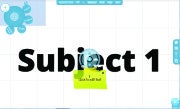
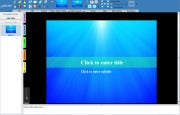
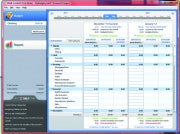
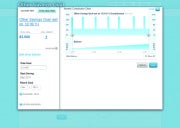
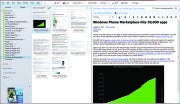
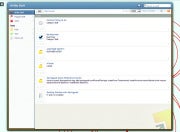
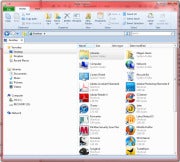
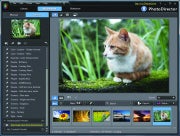
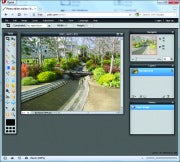
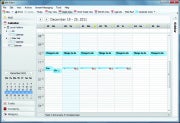

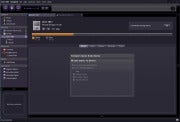

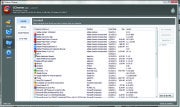
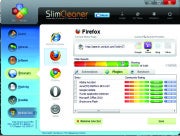
No comments:
Post a Comment